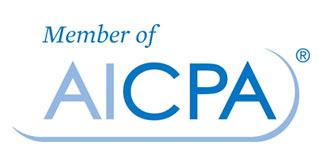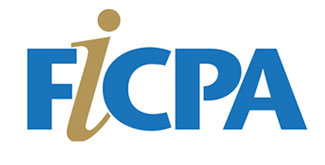The IRS announced inflation adjustments for tax year 2023. The items adjusted for annual inflation include tax rate schedules, the standard deduction, and more than 60 other provisions. Below is a summary list of commonly used provisions:
The Standard Deduction.
The standard deduction amounts for 2023 are:
$27,700 for married couples filing jointly (up from $1,800 in 2022);
$13,850 (up $900) for single taxpayers and married individuals filing separately.
$20,800 (up $1,400) for heads of households.
Marginal rates.
For tax year 2023, the top tax rate remains 37% for individual single taxpayers with incomes greater than $578,125 ($693,750 for married couples filing jointly). The other rates are:
35% for incomes over $231,250 ($462,500 for married couples filing jointly);
32% for incomes over $182,100 ($364,200 for married couples filing jointly);
24% for incomes over $95,375 ($190,750 for married couples filing jointly);
22% for incomes over $44,725 ($89,450 for married couples filing jointly);
12% for incomes over $11,000 ($22,000 for married couples filing jointly).
The lowest rate is 10% for incomes of single individuals with incomes of $11,000 or less ($22,000 for married couples filing jointly).
Maximum Capital Gains Rate
For tax years beginning in 2023, the maximum zero capital gain tax rate amount is $89,250 in the case of a joint return or surviving spouse, $59,750 in the case of an individual who is a head of household, $44,625 in the case of any other individual (other than an estate or trust), and $3,000 in the case of an estate or trust. The maximum 15-percent capital gain tax rate amount is $553,850 in the case of a joint return or surviving spouse, $276,900 in the case of a married individual filing a separate return, $523,050 in the case of an individual who is the head of a household, $492,300 in the case of any other individual (other than an estate or trust), and $14,650 in the case of an estate or trust.
Annual gift tax exclusion.
The annual exclusion for gifts increases to $17,000 for calendar year 2023, up from $16,000 for 2022.
Qualified Business Income
The qualified business income deduction under Code Sec. 199A is subject to certain limitations for taxpayers whose income exceeds a threshold amount. For tax years beginning in 2023, the threshold amount under Code Sec. 199A(e)(2) is $364,200 for married filing joint returns, $182,100 for married filing separate returns, and $182,100 for single and head of household returns.
Limitation on Use of Cash Method of Accounting
For tax years beginning in 2023, a corporation or partnership meets the gross receipts test of Code Sec. 448(c) for any tax year if the average annual gross receipts of such entity for the three-tax-year period ending with the tax year which precedes such tax year does not exceed $29 million.
Threshold for Excess Business Loss
For tax years beginning in 2023, in determining a taxpayer’s excess business loss, the amount under Code Sec. 461(l)(3)(A)(ii)(II) is $289,000 ($578,000 for joint returns).
Defined Contribution Retirement Plan Adjustments 2023
The limitation for defined contribution plans under section 415(c)(1)(A) is increased in 2023 from $61,000 to $66,000.
The Code provides that various other dollar amounts are to be adjusted at the same time and in the same manner as the dollar limitation of section 415(b)(1)(A). After taking into account the applicable rounding rules, the amounts for 2023 are as follows:
The limitation under section 402(g)(1) on the exclusion for elective deferrals described in section 402(g)(3) is increased from $20,500 to $22,500.
The limitation under section 408(p)(2)(E) regarding SIMPLE retirement accounts is increased from $14,000 to $15,500.
The dollar limitation under section 414(v)(2)(B)(i) for catch-up contributions to an applicable employer plan other than a plan described in section 401(k)(11) or section 408(p) for individuals aged 50 or over is increased from $6,500 to $7,500. The dollar limitation under section 414(v)(2)(B)(ii) for catch-up contributions to an applicable employer plan described in section 401(k)(11) or section 408(p) for individuals aged 50 or over is increased from $3,000 to $3,500.
The annual compensation limitation under section 401(a)(17) for eligible participants in certain governmental plans that, under the plan as in effect on July 1, 1993, allowed cost-of-living adjustments to the compensation limitation under the plan under section 401(a)(17) to be taken into account, is increased from $450,000 to $490,000.
The annual compensation limit under sections 401(a)(17), 404(l), 408(k)(3)(C), and 408(k)(6)(D)(ii) is increased from $305,000 to $330,000.
The dollar limitation under section 416(i)(1)(A)(i) concerning the definition of “key employee” in a top-heavy plan is increased from $200,000 to $215,000.
The Code also provides that several retirement-related amounts are to be adjusted using the cost-of-living adjustment under section 1(f)(3). After taking the applicable rounding rules into account, the amounts for 2023 are as follows:
The adjusted gross income limitation under section 25B(b)(1)(A) for determining the retirement savings contributions credit for married taxpayers filing a joint return is increased from $41,000 to $43,500; the limitation under section 25B(b)(1)(B) is increased from $44,000 to $47,500; and the limitation under sections 25B(b)(1)(C) and 25B(b)(1)(D) is increased from $68,000 to $73,000.
The adjusted gross income limitation under section 25B(b)(1)(A) for determining the retirement savings contributions credit for taxpayers filing as head of household is increased from $30,750 to $32,625; the limitation under section 25B(b)(1)(B) is increased from $33,000 to $35,625; and the limitation under sections 25B(b)(1)(C) and 25B(b)(1)(D) is increased from $51,000 to $54,750.
The adjusted gross income limitation under section 25B(b)(1)(A) for determining the retirement savings contributions credit for all other taxpayers is increased from $20,500 to $21,750; the limitation under section 25B(b)(1)(B) is increased from $22,000 to $23,750; and the limitation under sections 25B(b)(1)(C) and 25B(b)(1)(D) is increased from $34,000 to $36,500.
The applicable dollar amount under section 219(g)(3)(B)(i) for determining the deductible amount of an IRA contribution for taxpayers who are active participants filing a joint return or as a qualifying widow(er) is increased from $109,000 to $116,000. The applicable dollar amount under section 219(g)(3)(B)(ii) for all other taxpayers who are active participants (other than married taxpayers filing separate returns) is increased from $68,000 to $73,000. If an individual or the individual’s spouse is an active participant, the applicable dollar amount under section 219(g)(3)(B)(iii) for a married individual filing a separate return is not subject to an annual cost-of-living adjustment and remains $0. The applicable dollar amount under section 219(g)(7)(A) for a taxpayer who is not an active participant but whose spouse is an active participant is increased from $204,000 to $218,000. Accordingly, under section 219(g)(2)(A), the deduction for taxpayers making contributions to a traditional IRA is phased out for single individuals and heads of household who are active participants in a qualified plan (or another retirement plan specified in section 219(g)(5)) and have adjusted gross incomes (as defined in section 219(g)(3)(A)) between $73,000 and $83,000, increased from between $68,000 and $78,000. For married couples filing jointly, if the spouse who makes the IRA contribution is an active participant, the income phase-out range is between $116,000 and $136,000, increased from between $109,000 and $129,000. For an IRA contributor who is not an active participant and is married to someone who is an active participant, the deduction is phased out if the couple’s income is between $218,000 and $228,000, increased from between $204,000 and $214,000. For a married individual filing a separate return who is an active participant, the phase-out range is not subject to an annual cost-of-living adjustment and remains $0 to $10,000.
The adjusted gross income limitation under section 408A(c)(3)(B)(ii)(I) for determining the maximum Roth IRA contribution for married taxpayers filing a joint return or for taxpayers filing as a qualifying widow(er) is increased from $204,000 to $218,000. The adjusted gross income limitation under section 408A(c)(3)(B)(ii)(II) for all other taxpayers (other than married taxpayers filing separate returns) is increased from $129,000 to $138,000. The applicable dollar amount under section 408A(c)(3)(B)(ii)(III) for a married individual filing a separate return is not subject to an annual cost-of-living adjustment and remains $0.
Accordingly, under section 408A(c)(3)(A), the adjusted gross income phase-out range for taxpayers making contributions to a Roth IRA is between $218,000 and $228,000 for married couples filing jointly, increased from between $204,000 and $214,000. For singles and heads of household, the income phase-out range is between $138,000 and $153,000, increased from between $129,000 and $144,000. For a married individual filing a separate return, the phase-out range is not subject to an annual cost-of-living adjustment and remains between $0 and $10,000.


